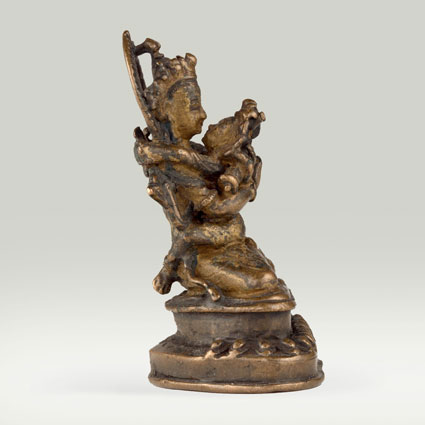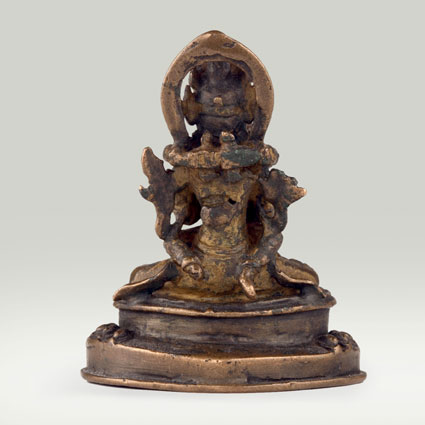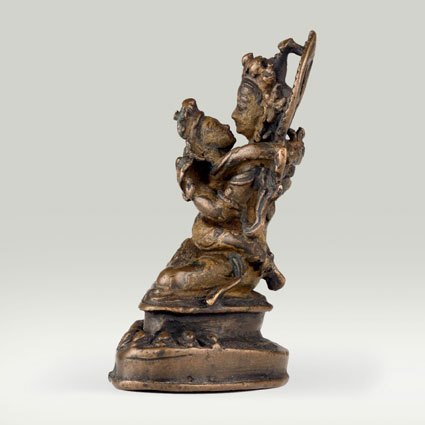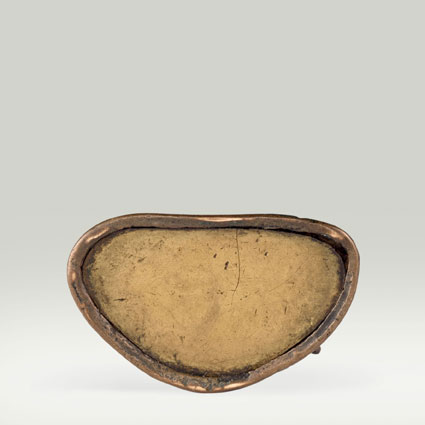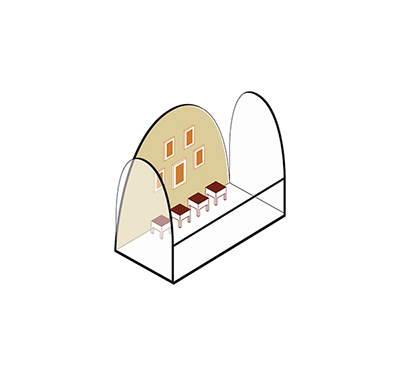ABS 061
Code: ABS 061
Country: Tibet
Style:
Date: 1400 - 1500
Dimensions in cm WxHxD: 4.6 x 4.9 x 2.9
Materials: Copper
Adibuddha or primordial Buddha Vajradhara with consort Prajna
Vajradhara is seated on a lotus pedestal, embracing his consort, Prajna. With his hands crossed behind her back, he holds a five-pronged diamond sceptre (vajra) with his right, and rings a prayer-bell (ghanta) with the left hand. The vajra symbolizes the male principle of compassion, and the ghanta the female principle of wisdom. Together, they represent the “skillful means” on the path to enlightenment.
Vajrasattva practices are common to all of the four schools of Tibetan Buddhism and are used to clarify the confused mind. According to the “old translation tradition” (ngagyur) of the Nyingma order, the “Primordial Buddha” is called Samantabhadra. The “new translation traditions” (sarmapa) of the Kagyü, Sakya and Gelug orders call him Vajradhara or Vajrasattva.
The Adibuddha (primordial Buddha), whether he be named Vajradhara, Vajrasattva or Samanthabhara, can be depicted in union (yab-yum) with his consort named Prajna / Samantabhadri. Because the Adibuddha is seen as the source of the Five Wisdom Buddhas (Akshobya, Ratnasambhava, Amithaba, Amoghasiddi, Vairochana), it follows that Prajna / Samantabhadri is considered to be the mother of them.
Vajradhara is seated on a lotus pedestal, embracing his consort, Prajna. With his hands crossed behind her back, he holds a five-pronged diamond sceptre (vajra) with his right, and rings a prayer-bell (ghanta) with the left hand. The vajra symbolizes the male principle of compassion, and the ghanta the female principle of wisdom. Together, they represent the “skillful means” on the path to enlightenment.
Vajrasattva practices are common to all of the four schools of Tibetan Buddhism and are used to clarify the confused mind. According to the “old translation tradition” (ngagyur) of the Nyingma order, the “Primordial Buddha” is called Samantabhadra. The “new translation traditions” (sarmapa) of the Kagyü, Sakya and Gelug orders call him Vajradhara or Vajrasattva.
The Adibuddha (primordial Buddha), whether he be named Vajradhara, Vajrasattva or Samanthabhara, can be depicted in union (yab-yum) with his consort named Prajna / Samantabhadri. Because the Adibuddha is seen as the source of the Five Wisdom Buddhas (Akshobya, Ratnasambhava, Amithaba, Amoghasiddi, Vairochana), it follows that Prajna / Samantabhadri is considered to be the mother of them.


